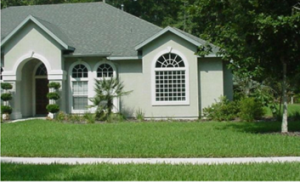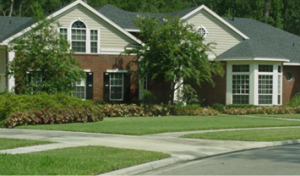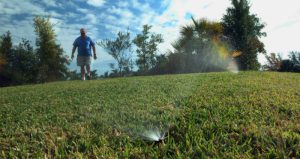 When it comes to foolproof lawncare for St. Augustinegrass, less can sometimes be more. How, you ask? Read on to learn more!
When it comes to foolproof lawncare for St. Augustinegrass, less can sometimes be more. How, you ask? Read on to learn more!
Mowing
Reduced mowing frequency (and increased mowing height) contributes to healthier shoots and roots. Turfgrass research indicates that the taller St. Augustinegrass shoots/leaf-blades are allowed to grow, the denser the root system which develops, and dense root systems have an increased capacity to tolerate drought, pests (e.g. lawn grubs) and diseases (e.g. Take-all root rot). Recommended mowing height for St. Augustinegrass is between 2 to 4 inches, depending on the cultivar. Click on these links to learn more about lawn grubs and Take-all root rot.
Irrigation
Reduced irrigation frequency discourages shallow roots by stimulating deeper root growth, resulting in healthier St. Augustinegrass turf. Reduced irrigation duration can also minimize the potential for nutrients such as potassium to leach through the soil. Leached nutrients can result in nutrient deficiencies. To learn more about irrigation frequency vs. duration click on this link.
 Fertilizers
Fertilizers
Reduced use of ‘quick-release’ fertilizers promotes healthier St. Augustinegrass. ‘Quick-release’ aka water-soluble fertilizers tend to provide a high dose of nutrients over a relatively short period of time. This all-at-once source of nutrients stimulates rapid shoot growth which can result in weakened turf, making it more susceptible to damage piercing-sucking insects like chinch bugs. To promote healthy St. Augustinegrass, the use of ‘slow-release’ fertilizers is recommended. To learn more about appropriate turf fertilizer recommendations click on this link.
 Dormancy
Dormancy
Reduced plant growth rates typically occur during cooler weather. So, even in the Sunshine State, when winter temperatures fall below 75 degrees Farenheit, although St. Augustinegrass lawns may still look green in contrast to the lawns of our more northern neighbors, growth has slowed considerably, and the turf is in its dormant phase. Reduced levels of lawncare inputs not only results in cost savings but can provide some protection from cold damage. To learn more about turf dormancy click on this link.
Click on this link for more information on fool proofing your St. Augustine lawn.
 0
0

